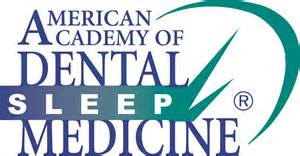What is TMJ?
T-M-J stands for Temporomandibular Joint, and is located where the skull and lower jaw meets, directly in front of your ear. These joints on your left and right side allow you to talk and chew. TMJ disorders are a combination of complex problems that cause pain and dysfunction in the jaw joints on one or both sides, and the muscles surrounding that control jaw movement. These disorders may also be referred to as craniomandibular dysfunction, craniofacial disorders, myofascial pain dysfunction, and degenerative joint disorders.
The National Institute of Dental and Craniofacial Research (NIDCR) of the National Institute of Health (NIH) indicate that over 10 million Americans suffer from TMJ disorder at any given time. Both men and women experience TMJ problems; however, 90% of those seeking treatment are typically women in their child-bearing years.
Symptoms
When the jaw joints and adjoining muscles do not work together as a system, a variety of symptoms occur, which include:
- Pain or stiffness in jaw joint, especially while chewing
- Noises like popping, clicking, or grating in the jaw joint
- Unexplained chronic headaches, facial pain, dull pain
- Grinding or clenching teeth
- Unexplained dizzy spells
- Earaches or ringing in the ears
- Neck, shoulder, or back pain
- Difficulty opening or closing mouth
- Jaw locking
- Unstable bite or bite that feels “off”
Treatments for TMJ Disorders
Each individual that suffers from a TMJ disorder is unique. Therefore, we personally customize treatment plans for each patient's individual needs. Treatment includes, but is not limited to:
Conservative Treatment: Symptom Relief*
- Limit Jaw Movement
- Maintaining proper jaw posture
- Soft Diet
- Stretching Exercises
- Ice and Heat Therapy
- Medications: anti-inflammatory (Advil, Motrin), muscle relaxants
- Stress Management
- Biofeedback
*Please remember that the conservative treatments above are used to relieve the symptoms associated with TMJ disorders and do not treat the underlying cause of the disorder.
Physical Treatment:
Phase I Treatment: Diagnostic phase used to reduce pain, increase comfort and stabilize TMJs
- Physical Therapy
- Pain Management
- Trigger Point Injections
- Orthopedic Appliance Therapy
Phase II Treatment: Long-term stabilization of the joints and surrounding musculature
- Occlusal Equilibration
- Dental Restorative Treatment (crowns, bridge, implants, etc.)
- Orthodontics (braces)
- Epigenetic Orthodontics with the DNA Appliance System
“The DNA appliance has made it possible to redevelop the craniofacial region including: changing the positions/alignment of teeth, remodeling/redeveloping bones in the jaws/mid-face and remodeling the upper airway. All accomplished without pain, drugs, or injections.”
Surgical Intervention*:
- Arthroscopic Surgery
- Open Arthroplasty
- Joint Replacement
*Surgical intervention is only seen as a last option for treatment of TMJ disorders. But for a small percentage of people suffering from internal derangement of the joint (when the discs of the joints are improperly functioning), surgery can bring significant relief. Which type of surgery is necessary will be determined by Dr. [doctor_name] and an oral and maxillofacial surgeon experienced in these types of procedures.



